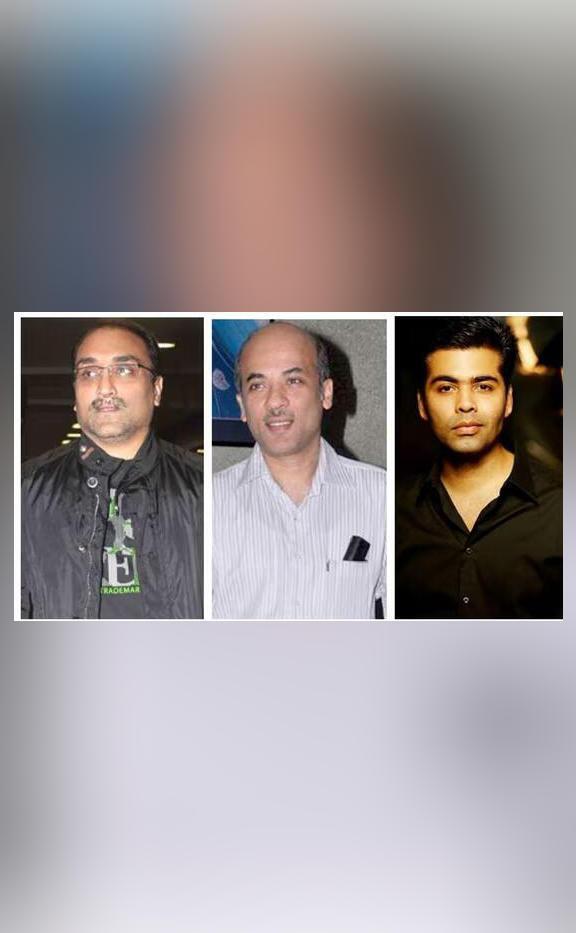
Title: Karan, Aditya & I born with golden spoons, sell fairytale: Sooraj
The Indian film industry has long been known for its glamour, glitz, and larger-than-life stories. And who better to tell these stories than the filmmakers themselves? Recently, renowned filmmaker Sooraj Barjatya made some candid comments about the privileged upbringing of himself, Karan Johar, and Aditya Chopra. According to Barjatya, the trio was born with “golden spoons” and has always had a life of ease and comfort.
In a recent interview, Barjatya said, “We have always travelled in cars. We have never had to walk on the streets. We have never had to struggle for a job or a place to live.” He added, “We showed the kind of world that was a fairytale, and the 90s were an era when the audience wanted to see fairytales.”
Barjatya’s comments sparked a lot of debate and discussion among film enthusiasts and critics. Some saw it as a refreshing honesty, while others felt it was a statement that only highlighted the privileges of the elite. But what does it mean to be born with “golden spoons”? What kind of advantages did Barjatya, Johar, and Chopra have that allowed them to make the kind of movies they did?
Growing up in families of established filmmakers, Barjatya, Johar, and Chopra had access to resources and opportunities that many others could only dream of. Their fathers, Rajkumar Barjatya, Yash Johar, and Yash Chopra, respectively, were already well-established in the industry, and their sons were practically born into the business.
This kind of privilege can be a double-edged sword. On one hand, it can provide young filmmakers with valuable mentorship, guidance, and connections that can help them get their start. On the other hand, it can also create a sense of entitlement and complacency, making it difficult for them to understand the struggles and challenges that others face.
Barjatya’s comments about showing the audience a “fairytale” are also worth examining. The 1990s were indeed a time of great change and upheaval in India, with the country experiencing rapid economic growth and globalization. But the Bollywood films of that era were often criticized for being overly simplistic, idealistic, and romanticized. They presented a sanitized version of reality, one that glossed over the harsh realities of poverty, inequality, and social injustice.
In this sense, Barjatya’s comments can be seen as a reflection of the kind of cinema that was popular during that era. Filmmakers like him, Johar, and Chopra were catering to an audience that wanted to escape the harsh realities of everyday life and indulge in fantasies and romance. And who can blame them? Life can be tough, and people often want to escape into a world of make-believe.
But what about the kind of cinema that is made today? Has the industry changed, or are we still stuck in the same old patterns? In recent years, there has been a growing trend towards more realistic and nuanced storytelling in Bollywood. Filmmakers like Anurag Kashyap, Dibakar Banerjee, and Neeraj Ghaywan have been pushing the boundaries of Indian cinema, tackling complex themes and issues that were previously taboo.
And yet, even in this changed landscape, the influence of privilege and entitlement can still be seen. Many young filmmakers today are still the children of established producers, directors, and actors, and they often have access to the same kind of resources and opportunities that Barjatya, Johar, and Chopra had.
So what does the future hold for Indian cinema? Will we continue to see the same kind of privileged access and entitlement, or will we see a new wave of filmmakers who are more diverse, more nuanced, and more representative of the real India?
Only time will tell. But one thing is certain: the Indian film industry will continue to evolve, and we will continue to see new stories, new themes, and new voices emerge. And who knows? Maybe one day, we will see a generation of filmmakers who are truly born with “golden spoons,” but who are also willing to take risks, challenge the status quo, and tell the kinds of stories that truly matter.






